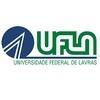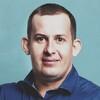Particularidades da reprodução de aves silvestres
O conhecimento sobre a reprodução de aves silvestres está em constante evolução com o avanço de novas pesquisas. O número gigantesco de espécies de aves e a dificuldade de acesso aos seus gametas são aspectos complicadores para o estabelecimento de técnicas de reprodução assistida. Aspectos muitos básicos como métodos de coleta de sêmen e as características seminais da grande maioria das aves silvestres são desconhecidos. Essas informações são fundamentais para entender a biologia reprodutiva e planejar programas de multiplicação com o uso de inseminação artificial. Por isso o levantamento das principais particularidades da reprodução de aves silvestres norteará ações para o aprofundamento de pesquisas já realizadas e estímulo ao desenvolvimento de novas metodologias de coleta de sêmen e avaliação seminal em aves silvestres até o momento não estudadas.
Palavras-chave: coleta de sêmen, características seminais, espermatozoide, reprodução assistida.
Introdução
Psitaciformes
Passeriformes
Anseriformes
Falconiformes
Anderson SJ, Bird DM, Hagen MD. Semen characteristics of the quaker parakeet (Myiopsitta monachus). Zoo Biol, v.21, p.507-512, 2002.
BirdLife International (2023) IUCN Red List for birds. Disponível em: http://www.birdlife.org Acesso em 07 maio 2023.
BirdLife International. State of the World’s Birds 2022: Insights and solutions for the biodiversity crisis. Cambridge, UK: BirdLife International. 2022.
Blanco JM, Gee GF, Wildt DE, Donoghue AM. Producing progeny from endangered birds of prey: treatment of urine-contaminated semen and a novel intramagnal insemination approach. J. Zoo Wildl. Med., v.33, n.1, p.1-7, 2002.
Blanco JM, Wildt DE, Höfle U, Voelker W, Donoghue A M. Implementing artificial insemination as an effective tool for ex situ conservation of endangered avian species. Theriogenology, v.71, n.1, p.200-213, 2009.
Blanco JM, Wildt DE, Monfort SL, Gee G, Donoghue AM. Developing assisted reproductive technologies to promote ex situ raptor conservation. In Proceedings of the International Symposium on Assisted Reproductive Technology (ART) for the Conservation and Genetic Management of Wildlife. 2002.
Briskie JV. Anatomical adaptations to sperm competition in Smith's Longspurs and other polygynandrous passerines. The Auk, v.110, n.4, p.875-888, 1993.
Bublat A, Fischer D, Bruslund S, Schneider H, Meinecke-Tillmann S, Wehrend A, Lierz M. Seasonal and genera-specific variations in semen availability and semen characteristics in large parrots. Theriogenology, v.91, p.82-89, 2017.
Burrows WH, Quinn JP. The collection of spermatozoa from the domestic fowl and turkey. Poult Sci, v.16, p.19–24, 1937.
Del Hoyo J, Del Hoyo, J, Elliott A, Sargatal J. Handbook of the birds of the world , v. 1, n.8. Barcelona: Lynx edicions. 1992.
DellaVolpe A, Schmidt V, Krautwald-Junghanns ME. Attempted semen collection using the massage technique in blue-fronted Amazon parrots (Amazona aestiva aestiva). J. Avian Med. Surg, v.25, n.1, p.1-7, 2011.
Dogliero A, Rota A, von Degerfeld MM, Quaranta G. Use of computer-assisted semen analysis for evaluation of Rosy-faced lovebird (Agapornis roseicollis) semen collected in different periods of the year. Theriogenology, v.83, n.1, p.103-106, 2015.
Dogliero A, Rota A, Lofiego R, von Degerfeld MM, Quaranta G. Semen evaluation in four autochthonous wild raptor species using computer-aided sperm analyzer. Theriogenology, v.85, n.6, p.1113-1117, 2016.
Dogliero A, Rota A, Lofiego R, von Degerfeld MM, Quaranta G. Semen collection and spermatozoa characteristics in the kea parrot (Nestor notabilis). J. Avian Med. Surg., v.31, n.1, p.24-28, 2016.
Fischer D, Neumann D, Purchase C, Bouts T, Meinecke‐Tillmann S, Wehrend A, Lierz M. The use of semen evaluation and assisted reproduction in Spix's macaws in terms of species conservation. Zoo Biol, v.33, n.3, p.234-244, 2014.
Fischer D, Schneider H, Meinecke-Tillmann S, Wehrend A, Lierz M. Semen analysis and successful artificial insemination in the St. Vincent amazon (Amazona guildingii). Theriogenology, v.148, p.132-139, 2020.
Frediani MH, Guida FJ, Salgado PA, Gonçalves DR, Blank MH, Novaes GA, Pereira, RJ. Semen collection by electro-stimulation in a variety of bird orders. Theriogenology, v.125, p.140-151, 2019.
Ghonim AIA, Awad AL, El-Sawy MA, Fatouh MH, Zenat AI. Effect of frequency of semen collection, dilution rate and insemination dose on semen characteristics and fertility of Domyati ducks. Egypt. Poult. Sci. J., v.29, n.4, p.1023-1045, 2009.
Guzsal E. Erection apparatus of the copulatory organ of ganders and drakes. Acta Vet Budap. 1974. Humphreys PN. Brief observations on the semen and spermatozoa of certain passerine and non-passerine birds. J. reprod. fertil v.29, p.327–336, 1972.
Kamar GAR. Semen characteristics of various breeds of drakes in the subtropics. J. Reprod. Fertil. v.3, p.405-409, 1962.
Kasai K, Izumo A, Inaba T, Sawada T. Efficiency of artificial vagina method in semen collection from Osaka Drakes. J Appl Poult Res, v.10, n.3, p.206-210, 2001.
Koehler LD. Diversity of avian spermatozoa ultrastructure with emphasis on the members of the Order Passeriformes. Mémoires du Musée National d’ Histoire Naturel, v.166, p.437–444, 1995.
Lierz M, Reinschmidt M, Müller H, Wink M, Neumann D. A novel method for semen collection and artificial insemination in large parrots (Psittaciformes). Scientific Reports, v.3, n.1, p.1-8, 2013.
Łukaszewicz E, Jerysz A, Kowalczyk A. Reproductive season and male effect on quantitative and qualitative traits of individually collected Muscovy duck (Cairina moschata) semen. Reprod. Domest. Anim., v.55, n.12, p.1735-1746, 2020.
Lüpold S, Calhim S, Immler S, Birkhead TR. Sperm morphology and sperm velocity in passerine birds. Proceedings of the Royal Society B: Biological Sciences, v.276, n.1659, p.1175-1181, 2009.
Neumann D, Kaleta EF, Lierz M. Semen collection and artificial insemination in cockatiels (Nymphicus hollandicus)–A potential model for Psittacines. Tierärztliche Praxis Ausgabe K: Kleintiere/Heimtiere, v.41, n.02, p.101-105, 2013.
Nishiyama H, Nakashima N, Fujihara N. Studies of the accessory reproductive organ in drakes: 1. Addition to semen of the fluid from the ejaculatory groove regions. Poult. Sci, v.55, p.234–242, 1976.
Özkök AO. Evaluation of different methods used in morphological examination of canary sperm. International Journal of Science Letters, v.4, n.2, p.269-276, 2022.
Özkök AO. Semen collection from small breed birds and some parameters related to passerine bird semen. International Journal of Science Letters, v.4, n.1, p.220-225, 2022.
Pellatt EJ, Birkhead TR. Ejaculate size in zebra finches Taeniopygia guttata and a method for obtaining ejaculates from passerine birds. Ibis, v.136, n.1, p.97-101, 1994.
Penfold LM, Harnal V, Lynch WE, Bird D, Derrickson SR, Wildt DE. Characterization of Northern pintail (Anas acuta) ejaculate and the effect of sperm preservation on fertility. Reproduction. v.121, p.267– 275, 2001.
Salt WR. The structure of the cloacal protuberance of the Vesper Sparrow (Pooecetes gramineus) and certain other passerine birds. The Auk, v.7, n.1, p.64-73, 1954.
Samour HJ, Spratt DMJ, Hutton RE, Jones DM. Studies on semen collection in waterfowl by electrical stimulation. Br. Vet. J., v.141, n.3, p.265-268, 1985.
Samour JH, Smith CA, Moore HD, Markham JA. Semen collection and spermatozoa characteristics in budgerigars (Melopsittacus undulatus). Vet. Rec., v.118, n.14, p.397-399,1986.
Samour JH. Semen collection, spermatozoa cryopreservation, and artificial insemination in nondomestic birds. J. Avian Med. Surg., v.18, n.4, p.219-223, 2004.
Samour JH. The reproductive biology of the budgerigar (Melopsittacus undulatus): semen preservation techniques and artificial insemination procedures. J. Avian Med. Surg, v.16, n.1, p.39-49, 2002.
Setioko AR, Kusumaningrum DA. The frequency of semen collection on semen characteristics and fertility in intergeneric cross between muscovy drakes and common ducks. In International Seminar on Tropical Animal Production (ISTAP), v.2, p.358-366, 2002.
Stelzer G, Crosta L, Bürkle M, Krautwald-Junghanns ME. Attempted semen collection using the massage technique and semen analysis in various psittacine species. J. Avian Med. Surg, v.19, n.1, p.7-13, 2005.
Tan NS. The training of drakes for semen collection. In Annales de zootechnie , v.29, n.2, p.93-102, 1980.
Temple SA. Artificial insemination with imprinted birds of prey. Nature, v.237, n.5353, p.287-288, 1972.
Villaverde-Morcillo S, García-Sánchez R, Castaño C, Rodríguez E, Gonzalez F, Esteso M, SantiagoMoreno J. Characterization of natural ejaculates and sperm cryopreservation in a golden eagle (Aquila chrysaetus). J. Zoo Wildl. Med., v.46, n2, p.335-338, 2015.
Watanabe M. An improved technique of the artificial insemination in ducks. ,J. Fac. Fish. Anim. Husb., Hiroshima Univ. v.1, p.36-8, 1957.
Watanabe M. Experimental studies on the artificial insemination of domestic ducks with special reference to the production of mule ducks. J. Fac. Fish. Anim. Husb. Hiroshima Univ, v.3, n.2, p.439-478, 1961.
Wolfson A. The cloacal protuberance: a means for determining breeding condition in live male passerines. Bird-banding, v.23, n.4, p.159-165, 1952.













